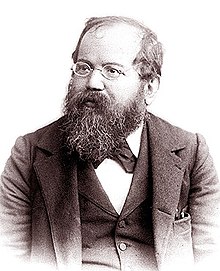
7 Rules of Chess Theory; and how it Ruined Chess
I’m about to tell you something I did not learn until years until my playing career. There are seven guiding principles which govern chess theory and how competitive players approach the game. The understanding of these rules is the cornerstone for anyone who wishes to ascend to serious play. They were discovered and codified by a man whom many of contemporaries regarded him as the man who ruined chess, and in a way, he did.
The Seven Rules of Chess Theory
- At the beginning of the game the forces stand in equilibrium.
- Correct play on both sides maintains this equilibrium and leads to a drawn game.
- Therefore a player can win only as a consequence of an error made by the opponent. (There is no such thing as a winning move.)
- As long as the equilibrium is maintained, an attack, however skillful, cannot succeed against correct defense. Such a defense will eventually necessitate the withdrawal and regrouping of the attacking pieces and the attacker will then inevitably suffer disadvantage.
- Therefore a player should not attack until he already has an advantage, caused by the opponent’s error, that justifies the decision to attack.
- At the beginning of the game a player should not at once seek to attack. Instead, a player should seek to disturb the equilibrium in his favor by inducing the opponent to make an error – a preliminary before attacking.
- When a sufficient advantage has been obtained, a player must attack or the advantage will be dissipated.
There’s a whole lot to unpack here. How did this theory come to be, and how accurate is it? And why did the guy who came up with this theory ruin chess as it was known?
Who Ruined Chess and How?

Wilhelm Steinitz was an Austrian born chess player who would eventually be the undisputed world champion between 1886 and 1894. Prior to becoming a world champion, Steinitz was a strong player and played similarly to all of his colleagues. During this time, chess was a spectator sport. All of this was prior to television and radio, of course, so beyond sporting events and theater, chess was actually good entertainment at the time.
Chess players were also performers, often playing to the crowd. Games were exciting, filled with wild sacrifices and mesmerizing combinations. An example of a swashbuckling game during this golden period was the so-called “Evergreen Game.” When clicking through this game, notice how willing the players are to sacrifice pieces and what a remarkable ending the game had. The game was so exciting that when it was over, spectators threw gold coins on the board for the victor, Adolf Anderssen.
Games like the Evergreen game were commonplace during this time, and the celebrity chess players were the ones who came up with the most daring combinations. Steinitz, too, was proficient with this style of play and was ranked #1 in the world for a period during this era. Everything changed in 1873 when Steinitz completely overhauled his style of play, based on the above 7 rules of chess theory which he codified in a magazine he was writing for at the time.
He introduced his theory just before a tournament in 1873 as well as an overhauled style of play. Despite winning the tournament, Steinitz was wildly criticized by his colleagues. The play style was considered boring, cowardly, and an affront to the attacking spirit of chess. But something strange happened, he became practically unbeatable including reeling 25 straight victories against the world’s strongest players.
Then, like a boss, he took a hiatus from chess play. He continued writing about his new chess theory while being harshly criticized by players like Anderssen and Johannes Zukertort. They themselves wrote scathing retorts to Steinitz’ work in magazines and periodicals. Steinitz wrote rebuttals to their retorts defending his theory and style of play. In this chess world, this entire debacle became known as the “Ink War.”
A World Champion Emerges
The years passed and the culture war in chess raged on. Despite his new style being fiercely criticized as boring, slow, torturous, cowardly, and killing the spirit of chess, no one could argue with his results. In a showdown between “the old style” versus “the new style,” Steinitz became the first official world champion by dominating Johannes Zukertort in a 20-game match in 1886. The face of chess has changed forever and Steinitz remained world champion until he was dethroned in 1894.
According to the former world champion Garry Kasparov, “His teachings became a turning point in chess history: it was from Steinitz that the modern era of chess began.”
“His teachings became a turning point in chess history: it was from Steinitz that the modern era of chess began.”
-Garry Kasparov
I’m going to close this section on Steinitz and his ideas by showing you a game from his match with Zukertort. Steinitz is playing black in this game. The game features the popular Queen’s Gambit opening. Note how slow, patient, methodical, and calm his moves are. Zukertort, no doubt, was dying to unleash some fury in this game, but the patient play of Steinitz would not permit it. As you’re clicking through this game, contrast it with the nature of this game, with the above “Evergreen Game” and it’s clear to see two different styles of play at the top level of chess in the span of just a few years.
Chess Theory Explained
During an era where exciting attacks were forcefully lobbed at one another during the course of a game, even the first two claims of Steinitz’ theory were outrageous ones. “At the beginning of the game the forces stand in equilibrium” and “chess is a forced draw with correct play.” Steinitz claimed nearly 100 years before computers even existed, that chess was a forced draw with proper play. This alone was a mind-numbing claim to make (one which still has not been confirmed conclusively!).
The cornerstone of what Steinitz was trying to convey is that trying to bully your opponent off the chessboard with over-the-top tactics and sacrifices simply will not work. The very nature of the game allows each player to maintain equilibrium. That is a comforting thought, actually. That means if you’re sitting across the board from Magnus Carlsen, or Alphazero, they cannot overrun you with force. In order to lose, you have to make a mistake (but you likely will).
Steinitz goes on, asserting that a player who tries to attack without an advantage in the position, the attack is doomed to fail (with a competent defense). Attacking prematurely will result in the withdrawal and regrouping of forces, handing the advantage over to your opponent. This is why Steinitz was criticized as cowardly. With this style of play, he made patient, slow moves, never aggressively pushing his pieces. All the while, inviting his opponent to attack prematurely.
Steinitz once said, “Victories through unsound attacks, despite their beauty, fills me with dread and horror.” He was that committed to his new ideas that even beautiful attacks and combinations executed at the wrong time, he could no longer stomach or appreciate.
Steinitz also continues that therefore a player should not attack until his opponent has made an error. Therefore, chess openings are not intended to destroy an opponent, but rather to disturb the equilibrium and invite your opponent to make an error. However, when an advantage is gained, a player is obliged to attack.
And make no mistake about it, Steinitz was still an amazing attacker. Once he gained the advantage in a game, the claws of the old era of chess came out. Players like Zukertort was completely outclassed by Steinitz. He could beat them at his game, and their own when needed.
A Lesson for the Wise
I used the word “ruin” in the title for a reason. Sure it’s a bit provocative. But Steinitz did, in fact, “ruin” chess in a lot of ways by taking the “fun” out of it. But he also birthed the modern era of chess. Players like Emmanuel Lasker and J.R. Capablanca became purveyors of Steinitz’ theories and changed the world of chess forever. Steinitz’ ideas allowed for the ability to objectively evaluate a chess position. How to take a look at a position and figure out not only which position is better, but which strategy each side should pursue.
No doubt Steinitz revolutionized chess theory, and ruined some players careers. But my words of wisdom to you, young padawan, is to remember that change is constant. It’s the only thing that never changes. When change comes, and it will, you have the opportunity to gain ground or the danger of losing it. Players like Anderssen and Zukertort, as amazing as they were in their time were left behind. Players who embraced, studied, and internalized Steinitz’ theories like Lasker was the reigning world champion for 27 years.
